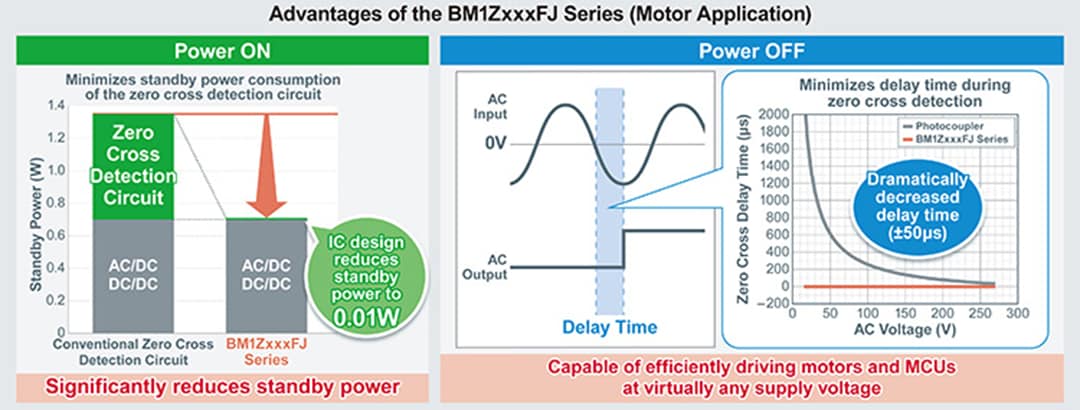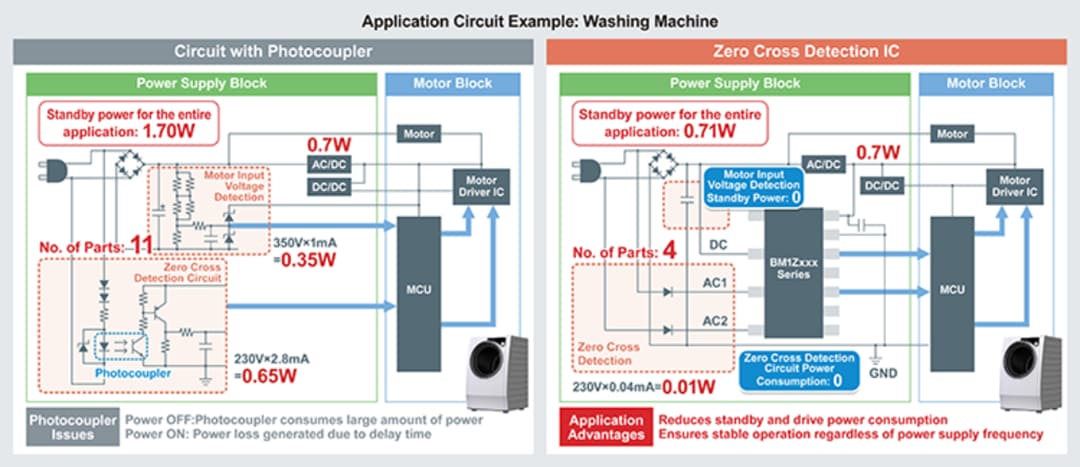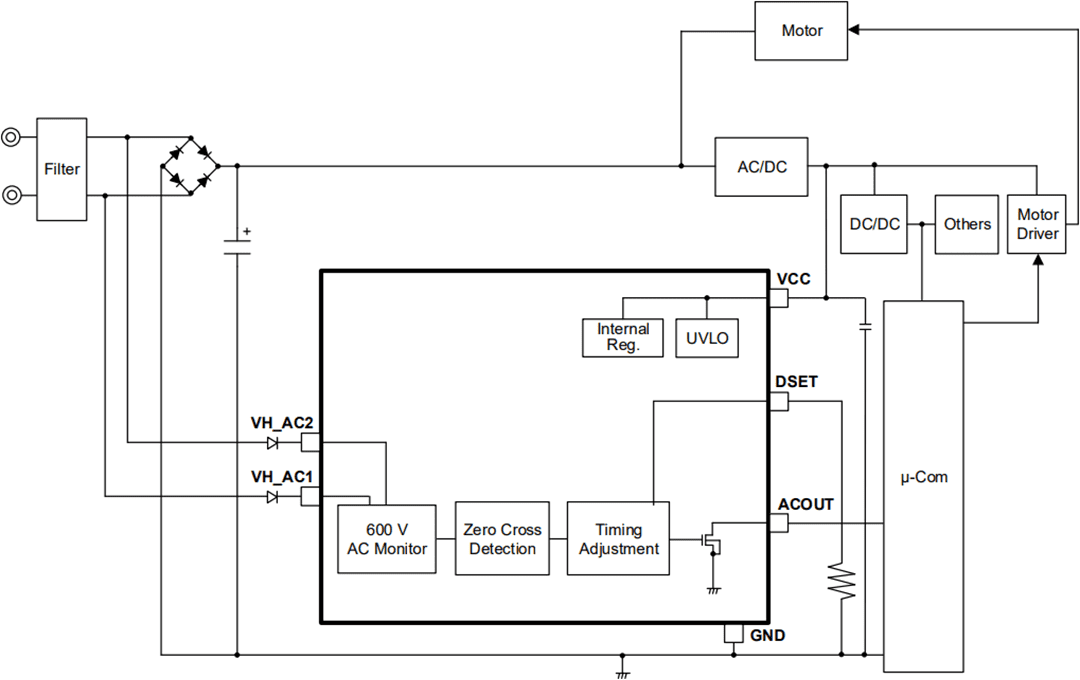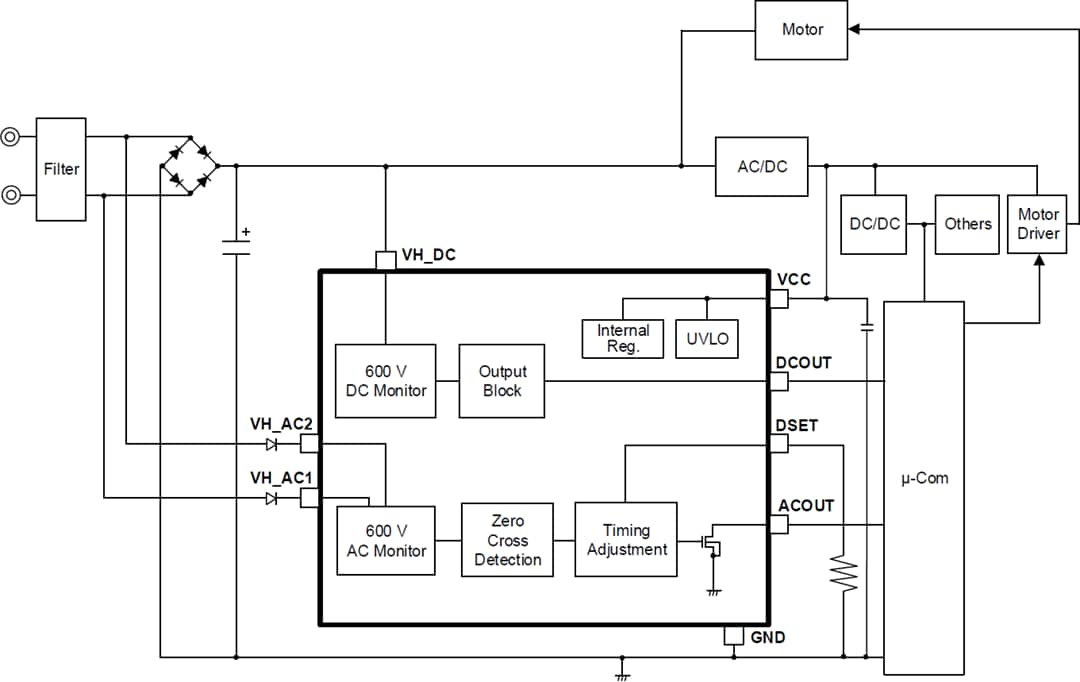- support@husseinkey.com
- livechat
ROHM Semiconductor BM1Z AC Voltage Zero Cross Detection (ZCD) ICs are voltage comparators that output the AC voltage zero-cross timing detection and the DC voltage after diode rectification. By eliminating the need for photocouplers and external components required in conventional ZCD circuits, it is possible to reduce the number of parts drastically and realize compact and highly reliable power supply applications. In addition, the BM1ZxxxFJ ICs can reduce standby power largely in comparison with an existing photocoupler control.
The BM1ZxxxFJ Series reduces standby power consumption of the zero cross circuit to just 0.01W while continuously powering the system. The error in delay time (which varies depending on the AC voltage) that exists with conventional photocoupler-equipped zero cross detection circuits is limited to ±50µs or less. This allows for the efficient drive of motors, even with the different AC supply voltages used in various countries and regions, as well as MCUs (which is difficult to achieve using conventional zero cross detection circuits). At the same time, eliminating the need for a photocoupler contributes to greater application reliability by reducing risks related to age-based degradation.

A zero cross detection circuit is needed in home appliances that supply power from an AC outlet to detect the zero cross point (which is the 0V point of the AC waveform) in order to efficiently control both motors and MCUs. As a result, improving zero cross detection accuracy allows for even more efficient motor and MCU control. And when the motor is stopped, pulse control provides greater circuit safety by reliably stopping the voltage at 0V.



















